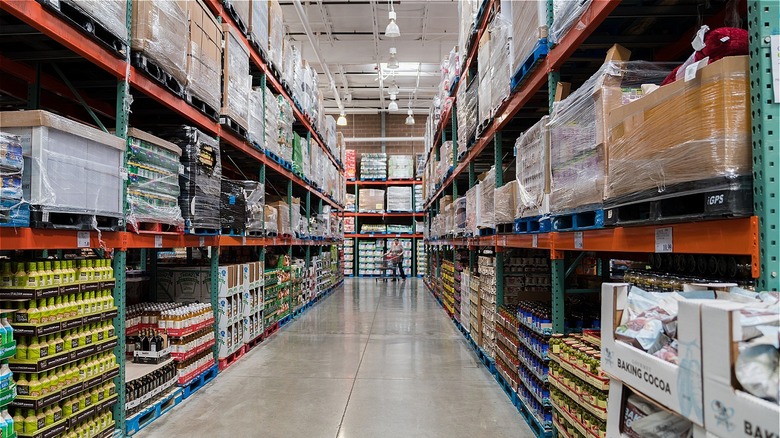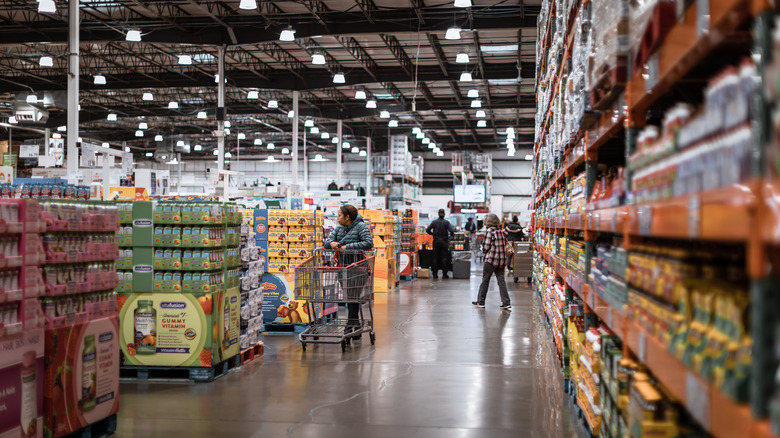You Could Save More Money By Simply Walking Further Into Costco
Any Costo shopper worth their toilet paper knows their $60 membership is well worth it when they toss their Kirland bacon, maple syrup, and olive oil into their shopping carts. But the wholesale haven can lead to a deal-hunting spree that can have you dragging your carts into isles you weren't planning to check out in the first place. Next thing you know, you're buying multiple $4.99 rotisserie chickens that you'll be eating for breakfast, lunch, and dinner for the foreseeable future.
Costco's lucrative business model ensures their deals remain irresistible, so we don't blame you if you can't keep it in your purse. But if you're one of those rare breeds who is immune to impulse buying, it serves to know that you can get the best deals in certain sections of Costo. Unless you can keep your head down and go straight for the items you want to buy, proceed with caution because you might end up buying a lot more than you need. Oh, consumerism.
Keep the cart rolling
According to Bankrate, retailers like Costco have strategies in place to pull customers to the far end of the store. They often place essential items like dairy and meat at the back of the store which makes it impossible for customers not to scan other products on the way (via Life Hacker). As tempting as it is, it's best not to load your shopping cart from the front of the store. Apparently, the middle section, aka the "center court," is where you're likely to stumble upon the best deals. Think of it as a Costco hack you wish you had known sooner.
The center aisle is often stuffed with a wide variety of products like cooking ingredients, canned goods, and merchandise, per Real Simple. According to what marketing expert Ben DiSanti told The New York Times, "Messiness, or pallets in the middle of an aisle, are also a cue for value." According to him, shoppers often associate less organized shelves to lower prices.
And remember those flashy product displays in the middle of the main aisle? That's the "action alley" for you. Environmental psychologist Paco Underhill told Bankrate that distributors and makers might pay to have their products displayed in a fashion that catches the eye of shoppers, so the prices are often aggressive.

